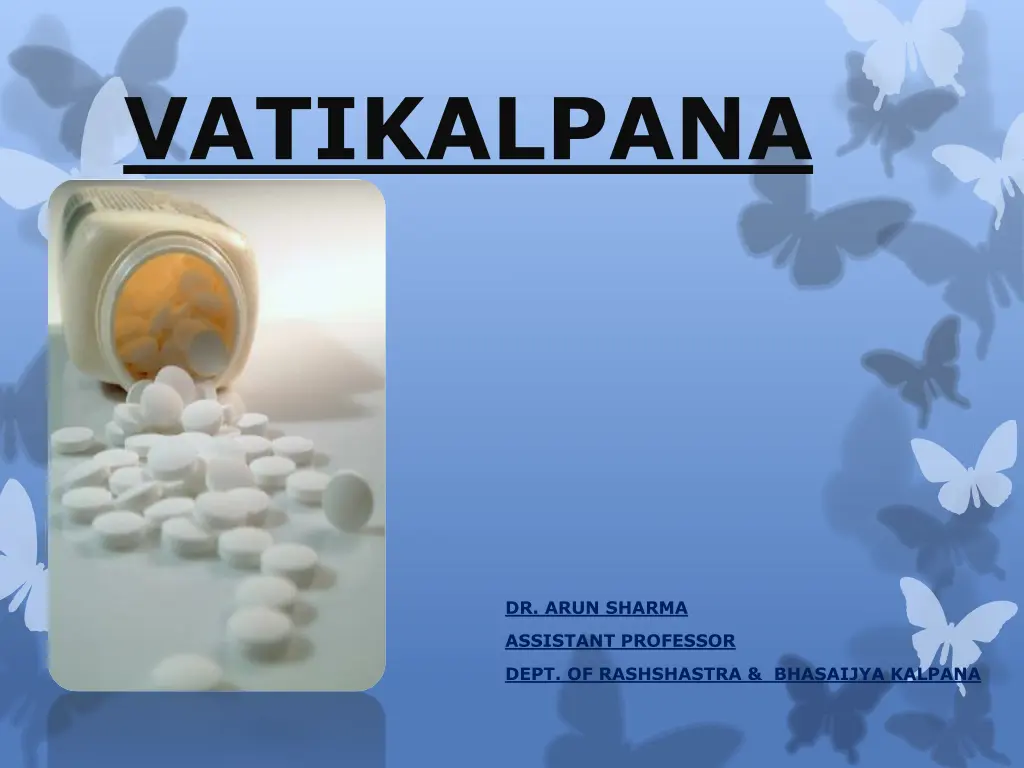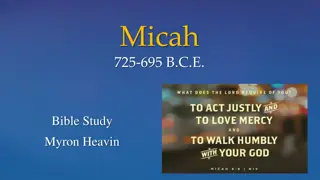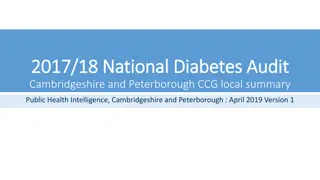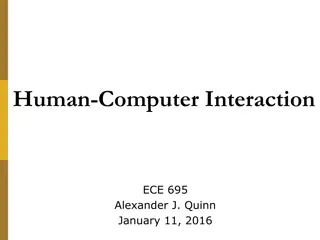
Ayurvedic Concepts of Vati and Gutika Formulations
Explore the traditional Ayurvedic concepts of Vati and Gutika formulations, including the techniques and preparation methods as mentioned in ancient texts. Learn about Vati, Gutika, Modaka, Guda, Varti, and more in Ayurveda. Discover the significance and methods of preparing these herbal formulations for health and wellness.
Download Presentation

Please find below an Image/Link to download the presentation.
The content on the website is provided AS IS for your information and personal use only. It may not be sold, licensed, or shared on other websites without obtaining consent from the author. If you encounter any issues during the download, it is possible that the publisher has removed the file from their server.
You are allowed to download the files provided on this website for personal or commercial use, subject to the condition that they are used lawfully. All files are the property of their respective owners.
The content on the website is provided AS IS for your information and personal use only. It may not be sold, licensed, or shared on other websites without obtaining consent from the author.
E N D
Presentation Transcript
VATIKALPANA \ DR. ARUN SHARMA ASSISTANT PROFESSOR DEPT. OF RASHSHASTRA & BHASAIJYA KALPANA
AYURVEDIC CONCEPT OF VATI / GUTIKA | || | || | || ( . . . / - )
AYURVEDIC CONCEPT OF VATI / GUTIKA Vati Kalpana is the outcome of kalka kalpana. Sharangadhara has mentioned a specific chapter for preparing Vati by specific techniques in his Sharangadhara Samhita. Vati(tablets), Gutika (pills) and Modaka (Large size pills) etc. are presented as tablets or pills.
AYURVEDIC CONCEPT OF VATI / GUTIKA According to the Acharya Sharangadhara Gutika,Vati,Modaka,Vatika,Pindi,Guda,Varti (tablets,bouls,pills draggees) are synonyms of Vati kalpana.
AYURVEDIC CONCEPT OF VATI / GUTIKA Gutika: If the medicine is rolled into small circular shape masses, called Gutika. This can be compare with pills in modern pharmaceutics.
CONTD.... Vati:- Vati is made in the shape of flat circular mass hence it is similar to tablet. Guda:- Kasthausadhi churna is mixed with Gudapaka and prepared product is called Guda.
CONTD.... Guggulu: Kasthaushadhi churna and bhasma etc. are mixed with Guggulu and make Vati and Gutika, known as Guggulu Kalpana.
CONTD... Varti: If the Gutika or Vati is modified into long oval shaped solid form, then it is called as Varti Kalpana. This is commonly used for local administration of following routes Viz. Guda (Anus), Yoni (Vagina), Shisna (Penis), Netra (Eye).
CONTD... According to the specific route of drug administration, the length and diameter of the Varti can be modified.
CONTD... Vataka:- If medicine moulded into big circular mass form known as Vataka. Pinda or Pindi: Aushadhi churna is mixed with Sarkara and medicine is moulded like Pinda then it is called as Pinda or Pindi kalpana.
CONTD... Modaka: It will be having circular shape and having big size usually. It is prepared with medicine possessing weight around 20g, 50g 100 g of around big lemon fruit and size rolled into circular mass form then it is called Modaka.
CONTD.... | || || ( . . . / ) According to this shloka, during preparation of vati we have to mixed sita 4 times of aoushadhi churna, guda(jaggery) 2 times of aoushadhi churna, guggulu and madhu is equal to aoushadhi churna and anya dravya are 2 times .
A Tablet is a pharmaceutical doses form. It comprises a mixture of active substances and excipients usually in powder form pressed or compacted from a powder into a solid dose.
Advantages Large scale manufacturing is feasible in comparison to other doses form. Therefore economy can be achieved. Accuracy of dose is maintained since tablet is a solid unit doses form. Longer expiry period and minimum spillage owing to lower moisture content. As tablet is not a sterile doses form stringent environmental conditions are not required in the tablet department. High stability
Easy to handling Lightest and most compact Greatest dose precision & least content variability Coating can mark unpleasant tastes & improve pt. acceptability In comparison to capsule tablets are more temper proof. Self administration is possible in comparison to parenteral doses form.
Disadvantages Some drugs resist compression into dense compacts. Drugs with poor wetting, slow dissolution, intermediate to large dosages may be difficult or impossible to formulate and manufacture as a tablet that provide adequate or full drug bioavailability.
CONTD Bitter taste drugs, drugs with an objectionable odor, or sensitive to oxygen or moisture may require encapsulation or entrapment prior to compression or the tablets may require coating. Slow onset of action as compared to parenteral, liquid orals and capsules. Difficult to swallow for kids, terminally ill and geriatric patients.
Types & Classes of Tablets Oral tablets for Ingestion:- Compressed tablets or standard compressed tablets Multiple compressed tablets(MCT) Layered tablets Compression-coated tablets Chewable tablets Sugar and chocolate-coated tablets Film-coated tablets Repeat-action tablets Delayed-action and enteric coated tablets Controlled release tablets o o
Tablets used in the oral cavity Buccal and sublingual tablets Troches and lozenges Dental cones Tablets administered by other routes Implantation tablets Vaginal tablets
Tablets used to prepare solutions Effervescent tablets Dispensing tablets (DT) Hypodermic tablets (HT) Tablets triturates (TT)
DILUENTS IN TABLETS THESE ARE FILLERS DESIGNED TO MAKE UP THE REQUIRED BULK OF TABLETS WHEN DRUG DOSAGE ITSELF IS INADEQUATE TO PRODUCE THIS BULK
DILUENTS USED IN TABLET FORMULATION DILUENTS DEXTRATES DEXTROSE FRUCTOSE LACTITOL LACTOSE MONOHYDRATE MALTITOL MALTODEXTRIN MALTOSE MANITOL CALCIUM CARBONATE CALCIUM PHOSPHATE DIBASIC CALCIUM PHOSPHATE TRIBASIC CALCIUM SULPHATE CELLULOSE,MICROCRYS TALLINE MCC SILICIFIED
CONTD SORBITOL STARCH SUCROSE SUGAR,COMPRESSEIBLE SUGAR SPHERE TALC XYLITOL
BINDERS IN TABLETS Binder is one of an important excipient to be added in tablet formulation. In simpler words, binders or adhesives are the substances that promotes cohesiveness. It is utilized for converting powder into granules through a process known as Granulation. Granulation is the unit operation by which small powdery particles are agglomerated into larger entities called granules.
CLASSIFICATION OF BINDERS Sugaras Natural Binders Synthetic/Semisybthetic Polymer Acacia Methyl Cellulose Sucrose Tragacanth Ethyl Cellulose Liquid glucose Gelatin Hydroxy Propyl Methyl Cellulose ( HPMC) Starch Paste Hydroxy Propyl Cellulose Pregelatinized Starch Sodium Carboxy Methyl Cellulose Alginic Acid Polyvinyl Pyrrolidone (PVP) Cellulose Polyethylene Glycol (PEG) Polyvinyl Alcohols Polymethacrylates
BINDERS USED IN TABLETS FORMULATION CONCENTRATION USED (%) BINDER ACACIA MUCILAGE UP TO 20 1-5 5-10 ALGINIC ACID CARBOMER
CONCENTRATON USED (%) BINDER CARBOXYMETHYLCELLUL OSE SODIUM 5-15 CELLULOSE MICROCRYSTILLINE ETHYL CELLULOSE 1-3 GELATIN 5-20
CONCENTRATION USED (%) BINDER UP TO 50 GLUCOSE,LIPID 1-10 GUAR GUM 2-6 HYDROXYETHYL 2-6 HYDROXYPROPYL CELLULOSE HYDROXYPROPYLMETHYL CELLULOSE 2-5
MAGNESIUM ALLUMINUM SILICATE 2-10 2-10 MALTODEXTRIN METHYLCELLULOSE 1-5
POLYETHYLENE OXIDE 5 POVIDONE 0.5-0.5 SODIUM ALGINATE 1-3 STARCH PASTE 5-25 SUCROSE(SYRUP) UP TO 70 WATER
DISINTEGRANTS IN TABLETS A DISINTEGRANTS IS ADDED MOST TABLET FORMULATION S TO FACILITATE A BREAKUP OR DISINTEGRATIONS OF TABLETS WHEN IT CONTACTS WATER IN THE G.I.T.
DISINTEGRANTS USED IN TABLET FORMULATION CONCENTRATION USED (%) DISINTEGRANTS 2-10 ALGINIC ACID 1-5 CARBOXYMETHYLCELLUL OSE SODIUM CELLULOSE,MICROCRYS TILLINE UP TO 10 CROSCARMELLOSE 0.5-5 CROSPOVIDONE 2-5
DOCUSATE SODIUM 0.5-1 GUAR GUM 2-8 MAGNESIUM ALUMINUM 2-10 METHYLCELLULOSE 2-10 POLACRILIN POTASSIUM 2-10 POLOXAMER 5-10
POVIDONE 0.5-5 SODIUM ALGINATE 2.5-10 SODIUM LAURYL SULFATE 0.5-2 SODIUM STARCH GYLCOLATE 2-8 STARCH 2-10 STARCH, PREGELATINIZE 5-10
STARCH USP AND VARIES STARCH DERIVATIVES ARE THE COMMON DISINTEGRATING AGENTS.IT IS TYPICALLY USED IN THE CONCENTRATION RANGE OF 5 TO 20 % OF THE TABLET WEIGHT. THE DISINTEGRATION AGENT MAY BE MIXED AT 2 STAGES: INTRAGRANULAR- DURING THE FORMULATION OF GRANULES PRIOR TO WETTING WITH THE GRANULATING FLUID EXTRAGRANULAR-MIXING STAGE DURING COMPACTION OF GRANULES INTO TABLETS
LUBRICANTS IT IS A SUBSTANCE INTRODUCED TO REDUCE FRICTION BETWEEN MOVING PARTICLES GLIDANTS IT IS A SUBSTANCE THAT IS ADDED TO A POWDER TO IMPROVES ITS FLOWABILITY OR A SUBSTANCE THAT ENHANCES THE FLOW OF GRANULAR MIXTURE BY REDUCING INTERPARTICLE FRICTION
LUBRICANTS AND GLIDANTS USED IN TABLET FORMULATION CONCENTRATION USED(%) LUBRICANTS 0.5-2 CALCIUM STEARATE 5 FUMARIC ACID 0.5-4 GLYCERYL BEHENATE GLYCERYL PALMITOSTEARATE 0.5-5 HYDROGENATED VEGETABLE OIL 1-6
MAGNESIUM STEARATE 0.25-5 PEG4000 OR 6000 2-5 SODIUM SULPHATE 1-2 STARCH 2-10 STEARIC ACID 1-3 TALC 1-10 ZINC STEARATE 0.5-2
CONCENTRATION USED (%) GLIDANTS CALCIUM SILICATE 0.5-2 CELLULOSE,POWDERED 1-2 MAG. CARBONATE 1-3 MAGNESIUM OXIDE 1-3 MAGNESIUN SILICATE 0.5-2 SILICON DIOXIDE 0.05-0.5 STARCH 2-10 TALC 1-10




